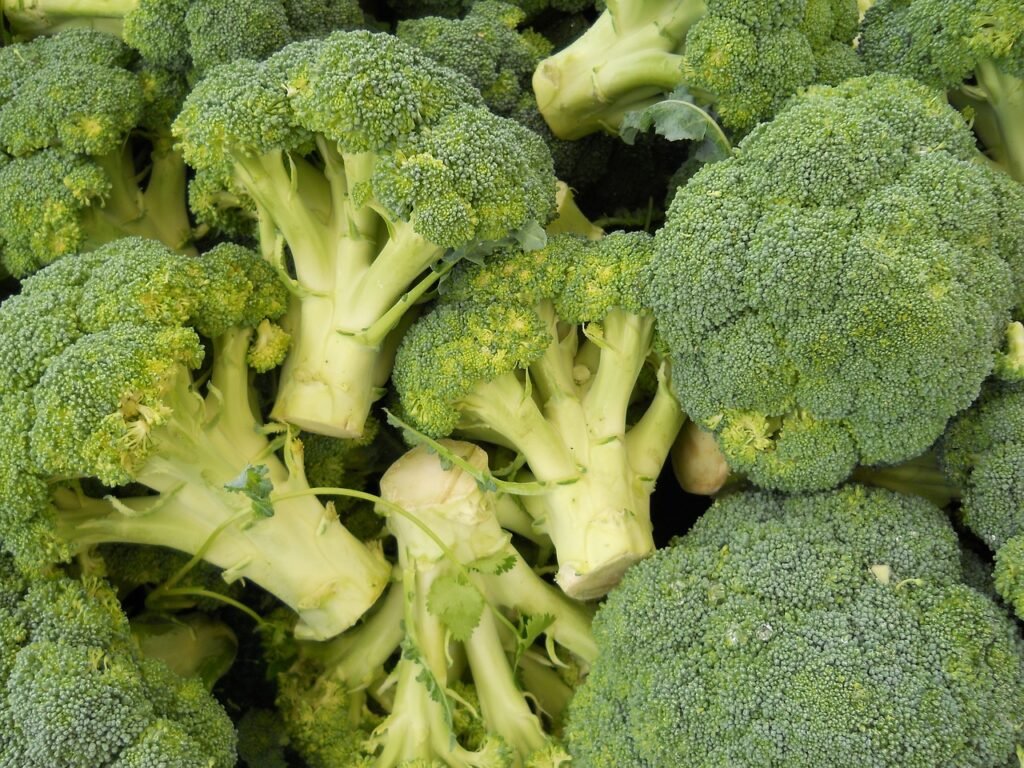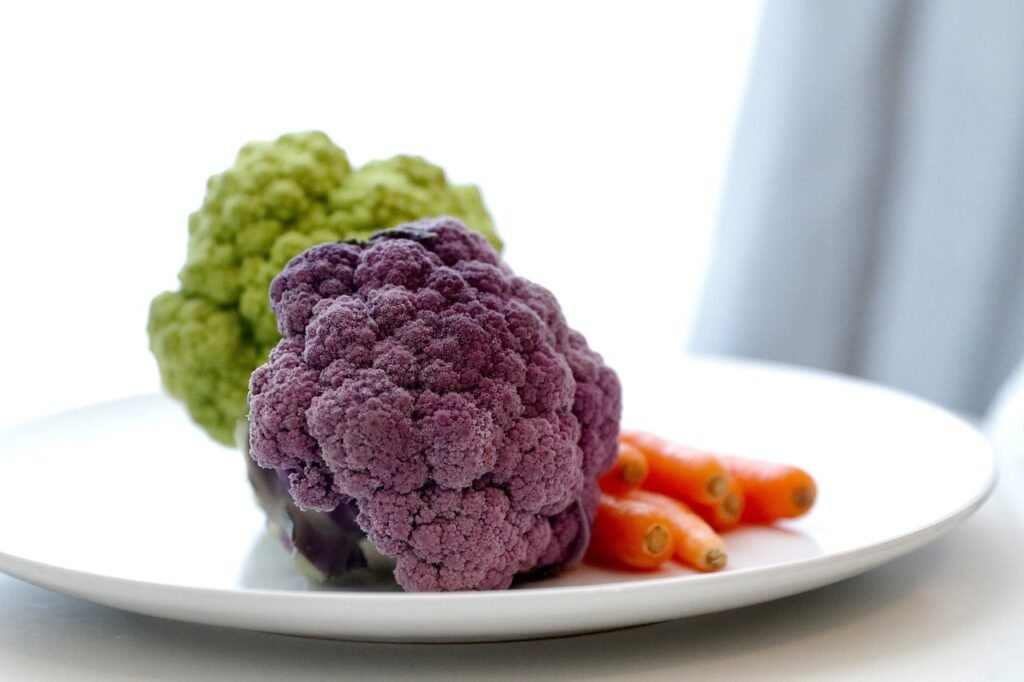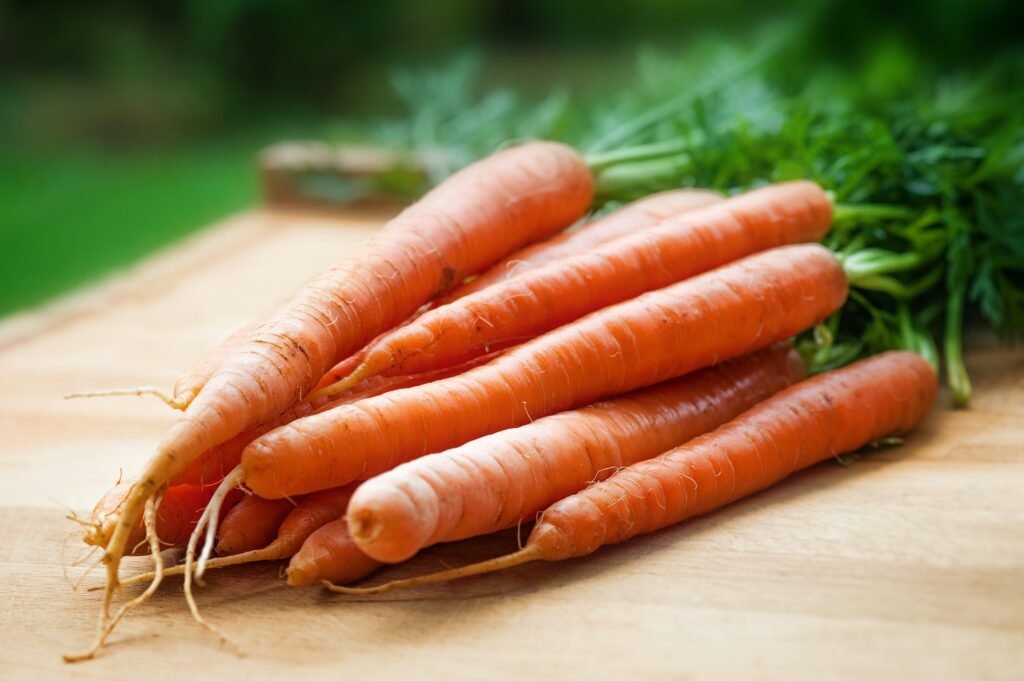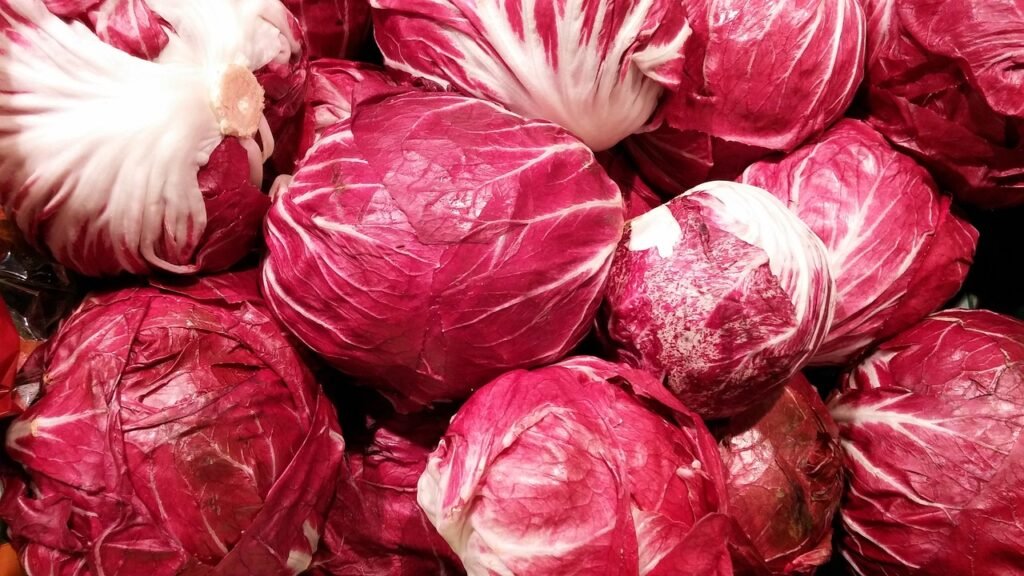Incorporating vegetables rich in fiber into your daily diet is a simple yet effective way to boost your overall health. Dietary fiber from vegetables, as part of an overall healthy diet, can help reduce blood cholesterol levels and may lower the risk of heart disease. In this guide, we will delve into the world of fiber-rich vegetables, revealing their nutritional profiles and showcasing easy ways to include them in your meals.”
Introduction
Fiber is an essential nutrient that our bodies need for proper digestive health, weight management, and overall well-being. Unfortunately, most people don’t get enough fiber in their diets. One of the best ways to increase your fiber intake is by consuming more vegetables. Not only are they rich in fiber, but they also contain a host of other nutrients that your body needs.

From broccoli and Brussels sprouts to lentils and peas, the vegetable kingdom is replete with high-fiber foods that can help keep you feeling full, manage your weight, and promote a healthy digestive system. Let’s embark on this fiber-filled journey and discover the power of fiber-rich vegetables.
Understanding the Importance of Fiber
Before we dive into the world of vegetables rich in fiber, let’s first understand why this nutrient is so important. Fiber, also known as roughage or bulk, is a type of carbohydrate that our bodies cannot digest. It passes through our digestive system relatively intact and provides numerous health benefits along the way.
The role of fiber in digestion
Fiber plays a crucial role in the digestion process. It adds bulk to our diet, which aids in moving food smoothly through the digestive tract, preventing or relieving constipation. Soluble fiber, found in vegetables like peas, carrots, and Brussels sprouts, can also help ease digestion by absorbing water and forming a gel-like substance.

This slows the digestion process, resulting in a steady release of nutrients into your body. On the other hand, insoluble fiber, found in vegetables like broccoli and green beans, helps create a sense of fullness, which can aid in weight management.
Furthermore, a diet rich in fiber can help maintain a healthy and well-balanced gut microbiota, contributing significantly to overall digestive health.
How fiber contributes to heart health
Fiber contributes significantly to heart health in several ways. Firstly, it assists in lowering low-density lipoprotein (LDL), or ‘bad’ cholesterol levels, thereby reducing the risk of developing heart disease. Vegetables rich in soluble fiber, such as okra, eggplant, and carrots, are particularly effective in this respect.
Secondly, fiber helps control blood pressure and inflammation, further contributing to heart health. Studies have shown that a diet high in fiber may significantly reduce the risk of hypertension and heart disease.
Lastly, fiber aids in weight management by promoting a sense of fullness, which in turn can help mitigate obesity-related heart issues. Thus, incorporating fiber-rich vegetables into your daily diet is a proactive step towards maintaining a healthy heart.
The Top Vegetables Rich in Fiber

Broccoli
Broccoli is not only high in fiber but also packed with a wealth of nutrients including vitamin C, vitamin K, iron, and potassium. One cup of raw broccoli contains about 2.4 grams of fiber.
Carrots
Carrots are versatile vegetables that are as delicious raw as they are cooked. One cup of chopped carrots has approximately 3.6 grams of fiber. Additionally, carrots are a great source of vitamin A.
Peas
Green peas are a surprising source of fiber. One cup of cooked green peas contains about 7.2 grams of fiber. Plus, they’re a good source of protein and micronutrients.
Brussels Sprouts
Brussels sprouts are another fiber-rich vegetable. One cup of cooked Brussels sprouts has about 4 grams of fiber. They’re also high in vitamin C and vitamin K.
Lentils
While not a traditional vegetable, lentils are part of the legume family and are rich in fiber. One cup of cooked lentils contains a whopping 15.6 grams of fiber. Lentils are also an excellent source of plant-based protein.
A detailed look at fiber content in various vegetables
As we continue our exploration of vegetables rich in fiber, let’s take a closer look at the fiber content of various vegetables.
- Spinach: A cup of cooked spinach provides around 4 grams of fiber and is also packed with vitamins A and K.
- Artichokes: One medium-sized artichoke contains about 10 grams of fiber, making it one of the most fiber-dense vegetables available.
- Sweet Potatoes: One medium sweet potato with skin provides approximately 4 grams of fiber.
- Beets: A cup serving of boiled beets delivers around 3.4 grams of fiber.
- Kale: One cup of cooked kale offers 2.6 grams of fiber along with a treasure trove of vitamins.
- Rutabagas: This root vegetable provides about 3.2 grams of fiber per cup, cooked.
- Corn: A cup of cooked corn kernels delivers approximately 3.6 grams of fiber.
- Turnips: A cup of cooked turnips offers around 3 grams of fiber.
- Potatoes: One medium potato with skin provides about 4 grams of fiber.
- Parsnips: A cup of cooked slices has around 5.5 grams of fiber.
- Squashes: Winter squashes, like butternut and acorn, provide about 6-7 grams of fiber per cup, cooked.
- Pumpkins: One cup of cooked, cubed pumpkin provides approximately 3 grams of fiber.
- Okra: A cup of cooked okra provides about 3.2 grams of fiber.
- Eggplant: One cup of cooked eggplant offers around 2.5 grams of fiber.
- Asparagus: A cup of cooked asparagus provides about 3.7 grams of fiber.
- Cabbage: One cup of cooked cabbage offers 2.8 grams of fiber.
- Celery: A cup of chopped, raw celery provides about 1.6 grams of fiber.
- Tomatoes: One cup of chopped or sliced raw tomatoes offers 2.2 grams of fiber.
- Zucchini: One cup of cooked zucchini provides about 2.5 grams of fiber.
- Bell Peppers: One cup of raw, chopped bell peppers provides about 2.5 grams of fiber.
Health Benefits of Consuming Fiber-Rich Vegetables
Consuming a diet rich in fiber has far-reaching health benefits beyond digestion and heart health. One noteworthy benefit is the reduction of the risk of developing type 2 diabetes. Many vegetables rich in fiber, such as broccoli, lentils, and Brussels sprouts, have a low glycemic index, meaning they don’t cause sudden spikes in blood sugar levels.

This helps regulate glucose in the blood, thus mitigating the risk of type 2 diabetes. Additionally, fiber-rich vegetables contribute to maintaining healthy skin. They help to flush out toxins from the body, which can improve the health and appearance of the skin.
The high nutrient content in these vegetables also promotes healthier hair growth and stronger nails. Lastly, the regular consumption of fiber-rich vegetables can improve mental health. Studies have found a correlation between a high-fiber diet and a decreased risk of depression.
Overall, incorporating vegetables rich in fiber into your daily diet can significantly contribute to your overall health and well-being.
Incorporating Vegetables Rich in Fiber into Your Diet
Incorporating fiber-rich vegetables into your diet doesn’t have to be a difficult task. Here are a few practical tips to help you:
- Eat them raw: Many vegetables are most beneficial and fiber-rich when eaten raw. Try adding raw carrots, bell peppers, or celery to your salads or have them as a snack with hummus or another healthy dip.
- Roasted vegetables: Roasting not only brings out the natural sweetness of vegetables like Brussels sprouts, sweet potatoes, or beets but also retains most of their fiber content. Toss them in a bit of olive oil, season with your favorite herbs and spices, and roast until they’re tender and slightly caramelized.
- Stir-fries and sautés: Quickly cooking vegetables in a hot pan retain more of their nutrients compared to boiling or stewing. Try a stir-fry with high-fiber vegetables like broccoli, bell peppers, and kale.
- Soups and stews: Soups and stews are perfect for incorporating a variety of fiber-rich vegetables. Lentils, peas, and carrots work well in many recipes.
- Smoothies: Blend spinach, kale, or other leafy green vegetables with fruit for a fiber-rich smoothie.
Try out the following recipe ideas for a fiber boost:
- Quinoa Salad: Mix cooked quinoa with raw bell peppers, tomatoes, cucumbers, and onions. Add a handful of chopped parsley and mint. Dress with olive oil and lemon juice.
- Roasted Vegetable Medley: Toss Brussels sprouts, carrots, and sweet potatoes in olive oil, salt, and pepper. Roast until tender. Sprinkle with a bit of parmesan cheese before serving.
- Lentil Soup: Sauté onions, celery, and carrots in olive oil. Add tomatoes, lentils, and vegetable broth. Simmer until lentils are cooked through.
Remember, the key is variety. By incorporating different vegetables into your meals, you ensure you’re getting a wide range of fiber and other beneficial nutrients.
Conclusion
Including vegetables rich in fiber in your daily diet is more than just a dietary choice; it’s a lifestyle commitment to long-term health and vitality. Fiber-rich vegetables provide an extensive host of benefits, including improved cardiovascular health, regulated blood sugar levels, enhanced skin health, and more.
There are bountiful ways to add these wholesome foods to your meals, whether raw, roasted, sautéed, or in soups, stews, and even smoothies. Embrace the power of fiber-rich vegetables, and unlock the path to a healthier, happier you.
Frequently Asked Questions (FAQs)
What is fiber and why is it important?
Fiber is a type of carbohydrate that the body can’t digest. It plays a vital role in maintaining a healthy digestive system, helping to prevent constipation and promote regular bowel movements. It also contributes to heart health, can aid in weight management, and regulates blood sugar levels.
How much fiber should I consume daily?
The recommended daily intake of fiber varies by age and sex. The Academy of Nutrition and Dietetics recommends that women should aim for at least 25 grams per day, while men should aim for at least 38 grams per day.
Can you get too much fiber from vegetables?
It is possible to consume too much fiber, which can lead to bloating, gas, and stomach cramps. However, it’s quite difficult to reach these levels by eating fiber-rich vegetables alone.
How can I incorporate more fiber-rich vegetables into my diet?
You can incorporate more fiber-rich vegetables into your diet by adding them to your salads, soups, smoothies, or as a side dish to your meals.
Are cooked vegetables still high in fiber?
Yes, cooking does not significantly reduce the fiber content of vegetables. It can, however, reduce the level of certain vitamins, particularly those that are sensitive to heat and water.
Can fiber help with weight loss?
Yes, foods high in fiber can assist in weight management. Fiber adds bulk to your diet, helping you feel full faster and for a longer period, which can help control your calorie intake.
References
- Dahl, W. J., & Stewart, M. L. (2015). Position of the Academy of Nutrition and Dietetics: Health Implications of Dietary Fiber. Journal of the Academy of Nutrition and Dietetics, 115(11), 1861–1870. doi: 10.1016/j.jand.2015.09.003.
- Slavin, J. L. (2013). Fiber and Prebiotics: Mechanisms and Health Benefits. Nutrients, 5(4), 1417–1435. doi: 10.3390/nu5041417.
- Anderson, J. W., Baird, P., Davis Jr, R. H., Ferreri, S., Knudtson, M., Koraym, A., … & Williams, C. L. (2009). Health benefits of dietary fiber. Nutrition reviews, 67(4), 188-205.
- U.S. Department of Agriculture and U.S. Department of Health and Human Services. Dietary Guidelines for Americans, 2020-2025. 9th Edition. December 2020.
Disclaimer
This article is intended for informational purposes only. The content is not a substitute for professional medical advice, diagnosis, or treatment. Always seek the advice of your healthcare provider with any questions you may have regarding a medical condition. Never disregard professional medical advice or delay in seeking it because of something you have read in this article. Dietary needs may vary for each individual due to age, gender, weight, medical conditions and daily activity, etc. Therefore, before starting any new diet plan, it is essential to consult your healthcare provider.





